What I love most about growing fruit and nut trees is that you’re building your food resiliency with something that ultimately takes very little care or maintenance. So, what nut trees should we grow on a homestead scale, how do we tend to them, and what are some tips for harvesting and pest protection?

Join me with guest David Hughes from Rock Bridge Trees as he shares his years of knowledge and hands-on experience growing nut trees. This is Pioneering Today Podcast episode #421.
To listen to more of my podcasts, you can check out the Pioneering Today Podcast Archives here.

Table of Contents[Hide][Show]
About David
David has always longed to live the homesteading lifestyle. He’s been gardening since the age of 12 and, in 1999, began selling home-grown produce to restaurants in Nashville, TN. This was at the forefront of the Farm-to-Table movement.
In 2010, David added a nursery to his operation, focusing on nut trees and flowering trees for beekeepers.
Today, Rock Bridge Tree Nursery is mainly mail-order and focuses on providing for small growers and homeowners. There is a vast amount of diversity in the plant world, and it’s his desire to share what he finds with others.
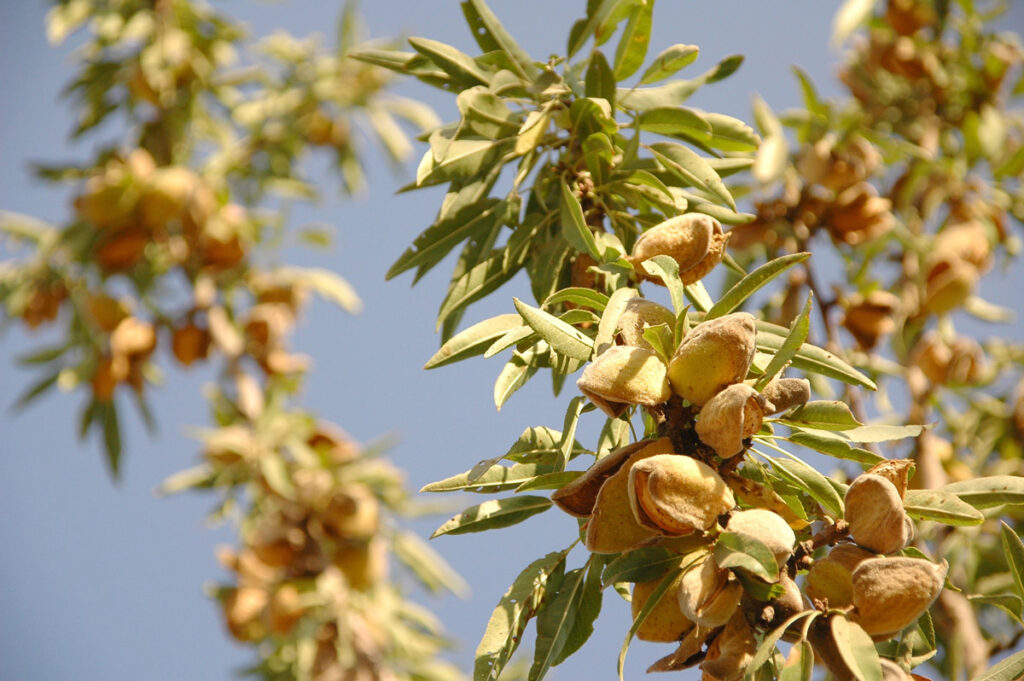
Good Nut Tree Options for a Homestead
Which nut trees will work for you largely depends on the part of the country you live in. Below you will see David’s recommendations on the various nut trees:
- Pecans – Pecans will grow from about Indianapolis south. Typically, growing zones 5-9.
- Black Walnuts – Black walnuts will grow pretty much anywhere in the continental U.S. except perhaps extreme northern Minnesota and upper New England areas. Typically, growing zones 4-9.
- Hazelnuts – Hazelnuts grow well in the northern states down to about Birmingham or Atlanta but generally don’t do well in the southernmost states. Typically, growing zones 5-9.
- Almonds – Grow well from zones 5-9.
- Japanese Walnuts – Do better up north. Typically, growing zones 4-8.
- Hickory – Grows well in the eastern states. Typically, growing zones 4-8.
The choices are broad, and David says it’s best to look at what you enjoy eating most. You’ll generally find an option that works well for you.
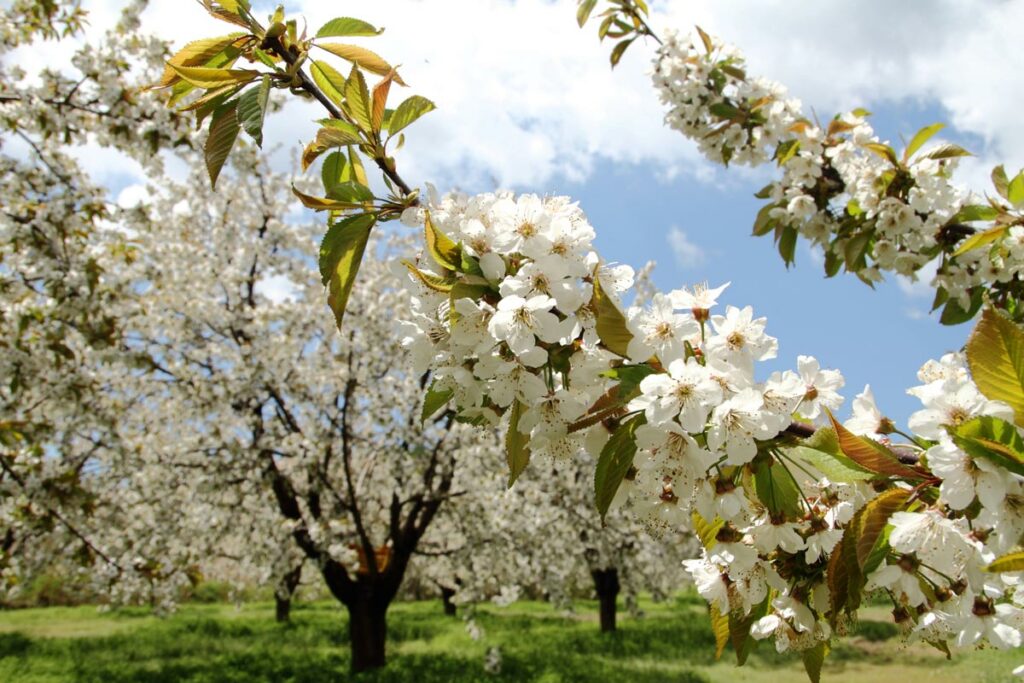
How Long Until I Can Harvest From a Nut Tree?
I asked David if any nut trees would begin producing sooner than others. We know they’re a tree, so it’s a long-term commitment when it comes to planting and harvesting.
Here’s what he said about the following varieties:
| Nut Tree Variety | Years to First Harvest | Life Span |
| Almond | 2-3 years | 15-30 years |
| Pecan | 5-7 years | 200-300 years |
| Black Walnut | 5-7 years | 200-300 years |
| Hickory | 7-8 years | 200 years |
| Hazelnut | 5 years | 40+ years |
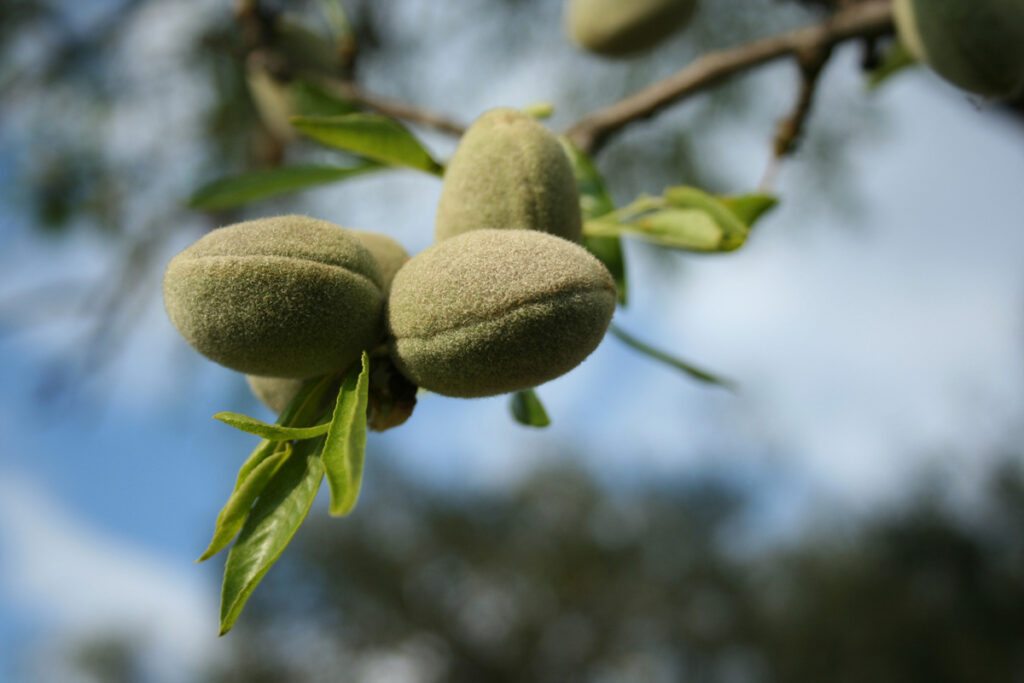
Pollination
Almonds are the only self-pollinating nut tree. Everything else needs at least two varieties to cross-pollinate.
Though there are male and female flowers on each tree, they’re not open at the same time.
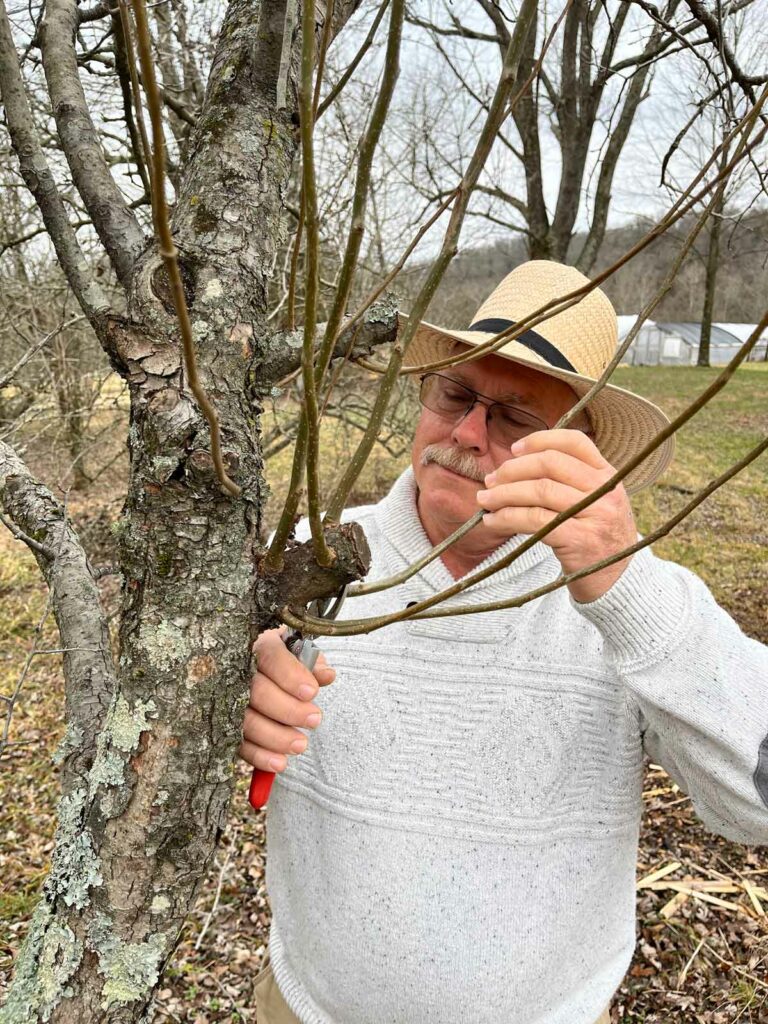
Nut Tree Maintenance
Pruning
When pruning nut trees, David’s rule of thumb is “sunlight equals flowers equals fruit.”
The more sunlight your trees can access, the more flowers they’ll produce. The more flowers they produce, the more fruit they’ll produce.
In general, the main pruning of a nut tree will happen in the first few years of its life to shape the tree for how you want it to grow. Then, regular maintenance will provide you with the best harvest year after year.
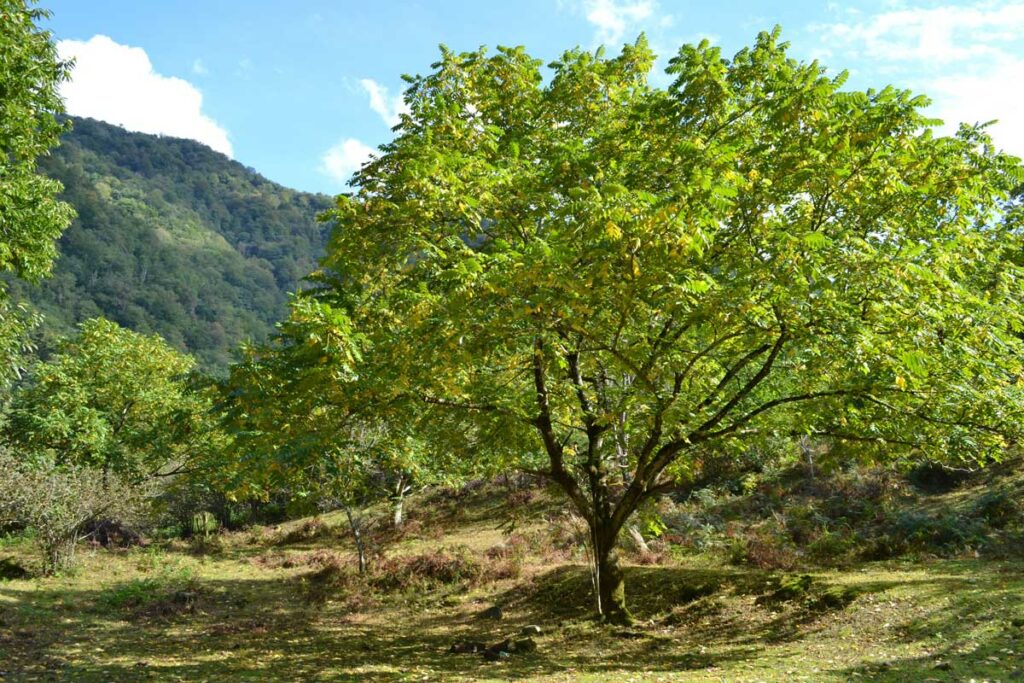
Space Required
I asked David, on average, how much space the average nut tree takes to grow. As you can see from the chart below, for the average smaller homestead, you’ll want to avoid the walnut, hickory and pecan trees unless you have ample space for a tree this large.
For the smaller homestead, a hazelnut or almond tree will be the best variety. For those with many acres, the larger nut trees can make great borders for pastures to create shady areas for livestock.
| Variety | Average Height | Average Width |
| Hazelnut | 12-15 Feet | 12-15 Feet |
| Almond | 25 Feet | 25 Feet Wide |
| Walnut | 90 Feet | 70-80 Feet |
| Hickory | 90 Feet | 70-80 Feet |
| Pecan | 90 Feet | 70-80 Feet |
Dwarf Varieties
Unlike fruit trees, there aren’t a lot of options when it comes to dwarf nut trees. The USDA is working on a dwarf pecan tree, but this will still probably be about 40′ tall.
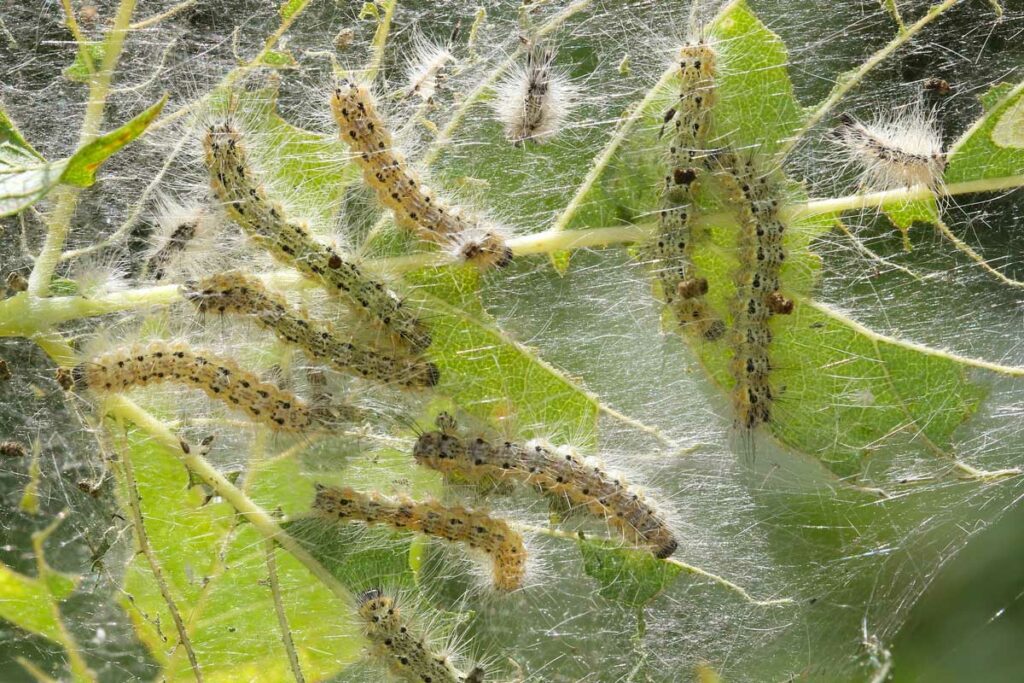
Pest-Pressure
Insects
Anything we want to eat, something else wants to eat it more. There will always be pest pressure when we’re growing a food-producing plant. Learning how to apply and when to spray fruit trees with organic pest control is an important skill.
If you’re happy with 25-30 pounds of nuts per year, you’ll get that from a mature nut tree. The good news is David says there are no pests that will completely decimate your crop.
Sure, you’ll have pest pressure, and some of the crops will get eaten (or ruined) by those pests, but David generally doesn’t worry much about them.
For example, where David lives, he gets “webworms” (pictured above), which is a pest you can actually see on the plant. “The larval stage of this pest skeletonizes and consumes leaves inside the protection of a tent-like web that they enlarge as they require additional food and grow. They may defoliate a tree occasionally, but rarely kill it.” (Source)
David says there are typically three generations of them within one season. If you can get to the first generation of them, remove them from the tree and burn them in a fire, you may not see them again all year.
However, if you miss that first generation, by the end of the fall your trees may be covered in them.
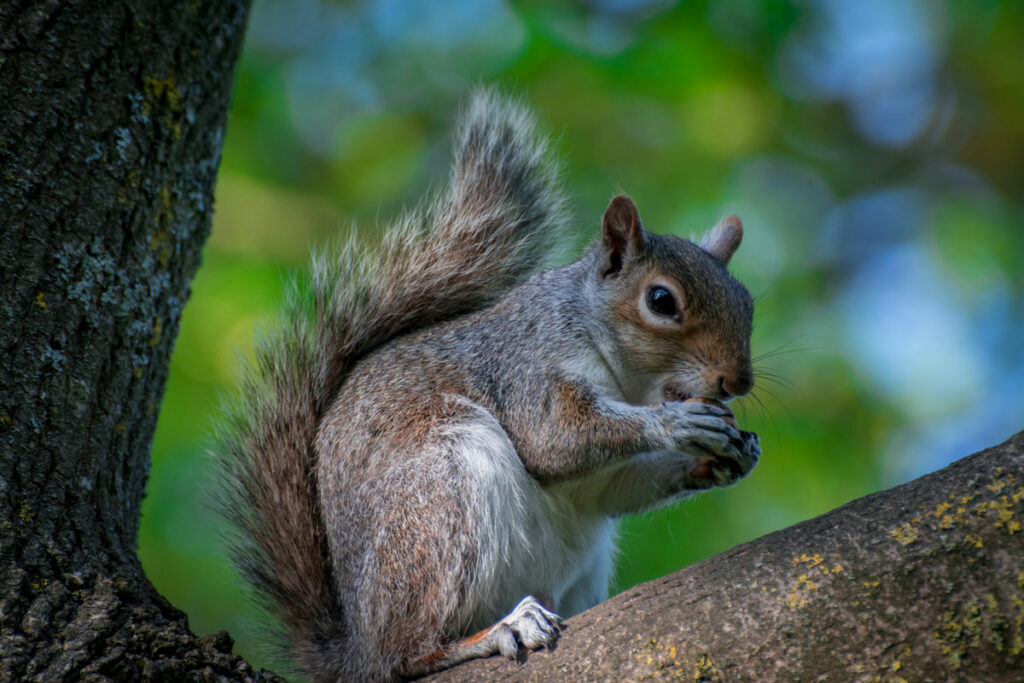
Squirrels
A common question I hear is, “How do I keep squirrels from getting all the nuts from my tree?” David says, “Every tree comes with a lifetime supply of squirrel meat.”
In fact, David says squirrels are a larger threat to your nut harvest than insects or other pests. There are ways to live-trap the squirrels or train dogs to run them off. But the best way to prevent squirrels from getting your nuts is to harvest them before they do.
When trees are smaller, you can use netting to deter the squirrels. David mentions that the bigger issues for him are crows, bluejays and woodpeckers.
Deer & Mice
When trees are young, using a tree guard can help prevent the deer from rubbing the bark off.
Unfortunately, mice and other underground pests can damage the root system of your nut trees. The best form of prevention for this is to have predators that catch mice, voles, etc. Time for another barn cat!
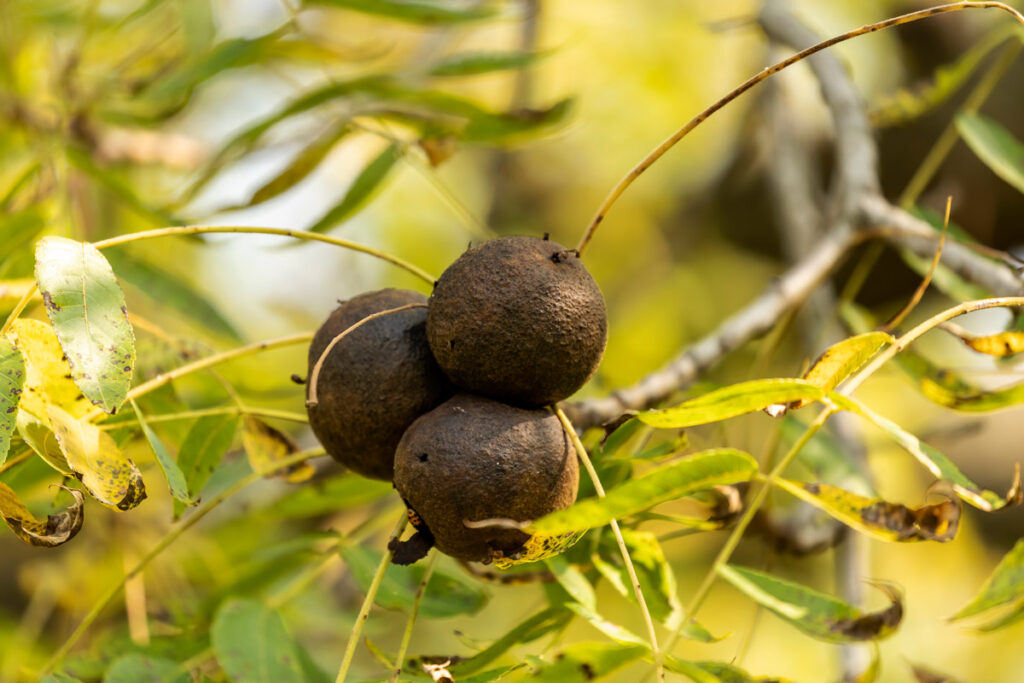
Dangers of Black Walnuts
Black walnuts have allelopathic properties. I often hear of many people hesitant to keep their large walnut trees thinking it will ruin any chance they have of growing a garden.
Thankfully, David shared that, though the allelopathic properties can be harmful to tomatoes, peppers, potatoes and other crops in the Solanaceae family, it’s not as though nothing will grow around a walnut tree.
David says if you want to have happy blackberries, plant them underneath a black walnut tree. But don’t be concerned that growing a walnut tree will ruin any chances of growing a productive garden. You just won’t want your garden right next to your walnut tree.
If that’s your only option, then you may need to decide which you want more, the walnut tree or a productive garden.
Black and English walnuts, heartnuts and all the nuts in the Juglans family have an allelopathic effect. So, this is something to be aware of when planting nut trees near your garden.
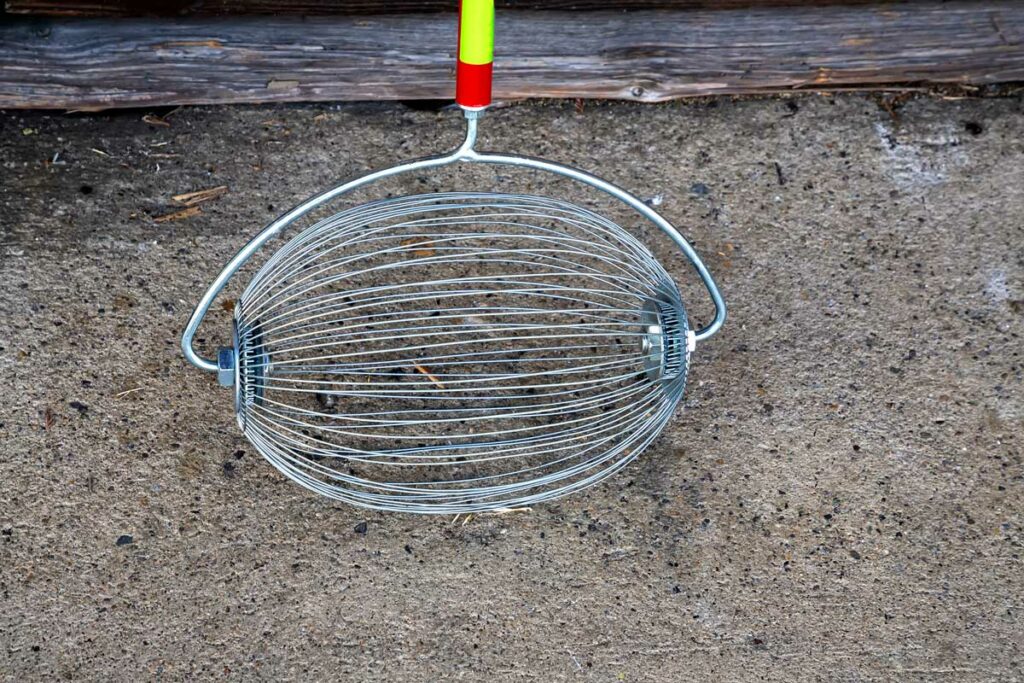
How to Harvest Nuts
Depending on the tree, there are various methods for harvesting the nuts. For many trees, you can simply shake the tree for the nuts to fall to the ground. Then, once the nuts have fallen, use something like a Nut Wizard (or Garden Weasel, pictured above) to pick them up.
A Nut Wizard is a device you push around on the ground and it will pick up the nuts into a basket. It’s a great product for collecting nuts from one or two trees and a fantastic chore for younger kids who think it’s a blast!
However, for those with many trees or larger trees, you’ll probably want to find another solution for the larger harvests.
How to Store Nuts
When storing nuts, the best way to store them is to freeze them in the shell. In fact, David shared that commercial nut growers store them in the freezer in the shell. Take them out of the freezer to shell them, and then put them back into the freezer for long-term storage.
If you vacuum-seal them, they should be good for about 2-3 years when stored properly. Nut meat is perishable, so you don’t want to crack them and leave them on the counter. They will go rancid in a few weeks.
Furthermore, if you’re storing nuts in the refrigerator along with other strong-smelling items (onions, garlic, etc.), they will pick up those flavors.
David says if you’ve only ever eaten pecans in a bag from the grocery store, then you’ve never tasted a real fresh nut. There’s a drastic difference between home-grown nuts vs. what you’ll buy at the grocery store.
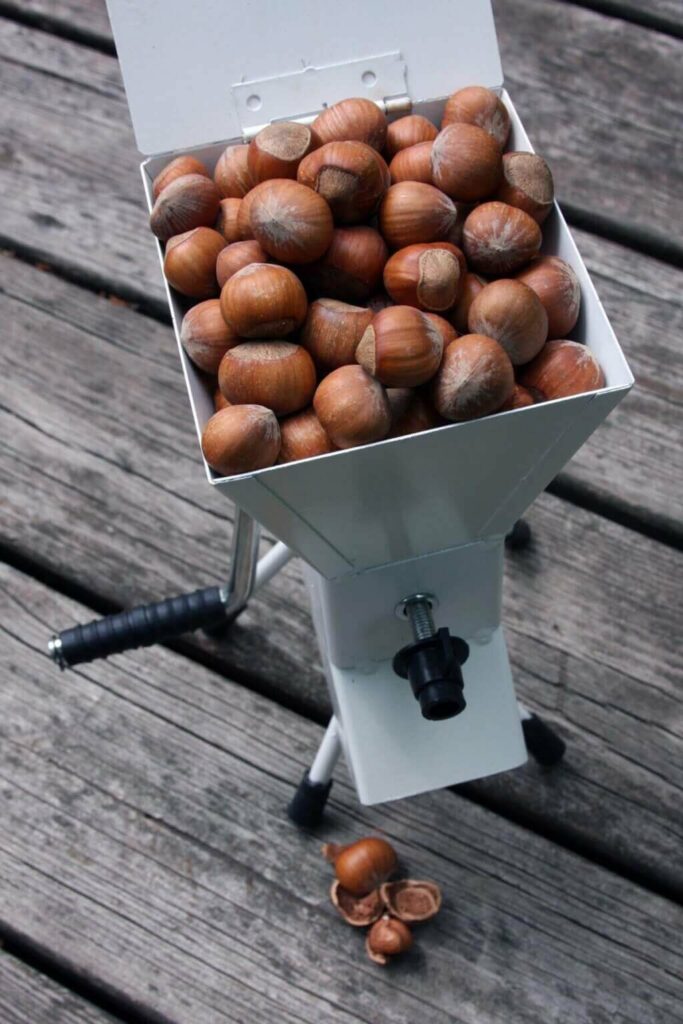
Nut Oils
I have a podcast on pressing your own nut and seed oils with Bevin Cohen, which is a great resource if you’re thinking about pressing any of your nuts into oil.
I asked David if he knew of any specific nut trees that lend themselves to pressing oil. He said that you can actually press hickory oil out of the nuts, and the flavor is much better than that of the nut itself.
Hickory nuts have a very astringent taste, which is likely why you don’t see them for sale on the grocery store shelf. However, the oil has a great flavor, much like hickory wood, and it works well for salad dressings or high-heat cooking since it has a high smoke point.
Other Benefits of Nut Trees
Besides producing nuts, the trees are extremely useful for shade, as a habitat for wildlife, as an additional food source for livestock, and even the wood has long-term value.
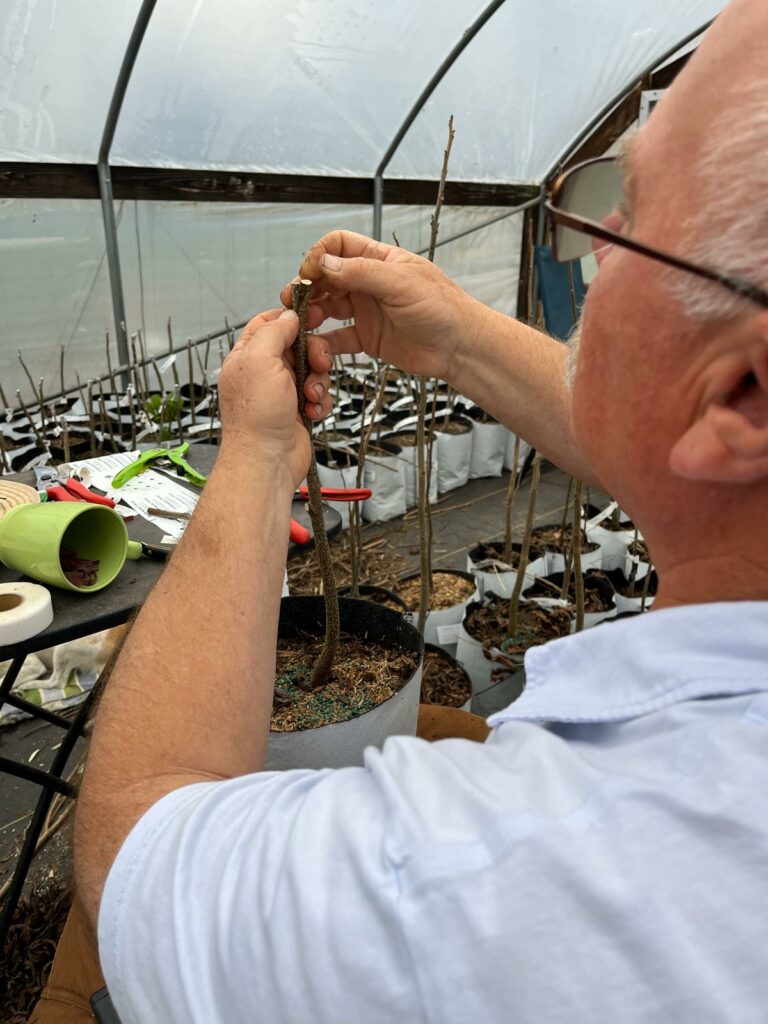
Where to Find David
If you’re looking to expand your homestead by adding nut trees, be sure to give Rock Bridge Trees a visit. Then, find David at the following places:
- Follow Rock Bridge Trees on Instagram.
- Check out the following Facebook pages: Rock Bridge Trees, Trees for Bees and Backyard Pecan Growers Group.
- And follow Rock Bridge Trees on YouTube.
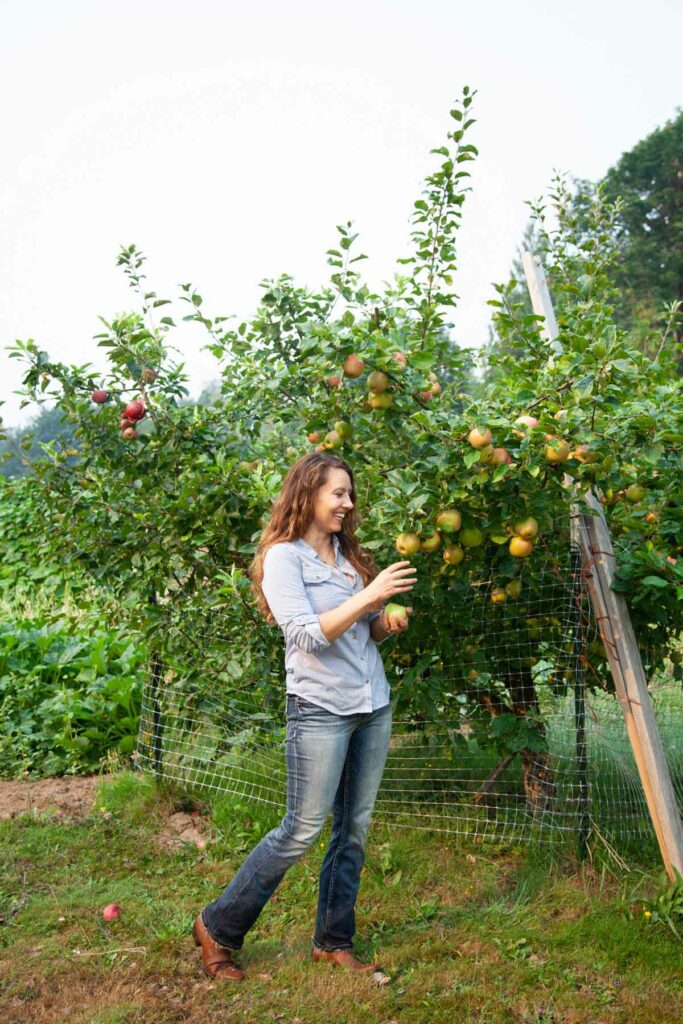
More Posts You May Enjoy
- Uncommon Plants that are Edible
- How to Grow Fruit Trees
- Planting a Fruit Tree Guild
- How to Prune Apple Trees (Winter or Summer?)
- When and How to Plant Fruit Trees
- Growing Fruit Trees in Pots (Tips For Success)
- Planting Berry Bushes and Fruit Trees (How Many Fruit & Berry Plants Per Person)
- 5 Tips to Starting an Orchard and Growing Fruit
Y
[fusebox_transcript]



